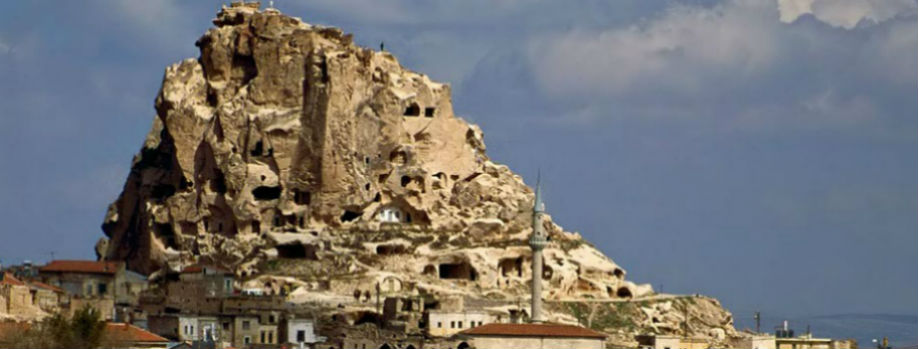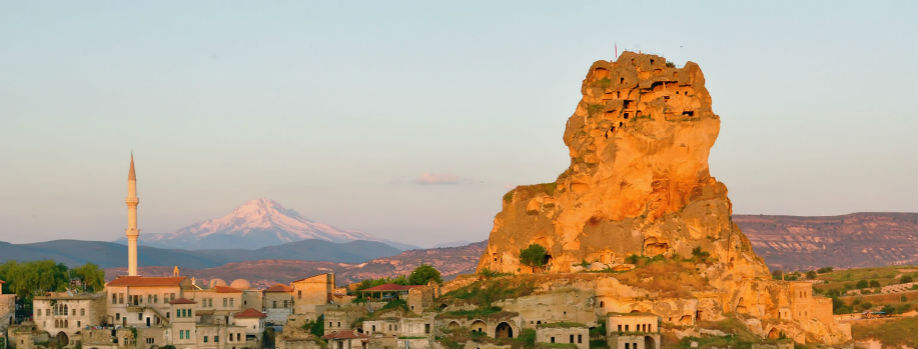Cappadocia, a dreamy slice of central Turkey dotted with ‘fairy chimneys’ (rock formations), has a history every bit as remarkable as its landscape. Volcanic eruptions created this surreal moonscape: the lava flows formed tuff rock, which wind and rain sculpted into sinuous valleys with curvy cliff faces and pointy fairy chimneys.
Cappadocians chiselled homes in the soft rock, paving the way for cave-dwelling hippies and today’s boutique fairy-chimney hotels.
Staying in Cappadocia today doesn’t involve any hardship or subterranean chambers. Many cave dwellings and fairy-chimney chapels have been converted into boutique hotels, where you can try the troglodyte lifestyle in luxury. Features include cave hamams (Turkish baths), rock-cut arches, walls patterned with volcanic colour-banding and panoramic terraces surveying the valleys. You’ll quickly discover what the locals have known for centuries: the tuff rock keeps rooms cool in summer and warm in winter.
Why so many cave dwellings in Cappadocia?
The troglodyte habit is often attributed to a need for places of refuge and concealment in troubled times, suggesting a chronology linked with either the Arab raids of the seventh or ninth centuries or the Turkish ones of the eleventh century.
The habit itself does not, however, imply such a need. In fact, rock-cut villages often occupy conspicuous sites…Instead, as noted above, this mode of architecture should be seen as a logical response to the local conditions. The millstone closures, which appear formidably defensive to an eye accustomed to built architecture must also be seen in this context: when timber is scarce and the soft rock easily worked, such a closing method for seldom-used storage cavities may be more efficient than conventional door.
The rock-cut villages cannot, therefore, be assigned with certainty to the periods of turmoil. There is certainly no question of concealment as far as the cave churches are concerned, since they are often located in prominent sites and many also have elaborate carved facades. Nor is there reason, therefore, for assigning the churches to periods of insecurity.
10 Fascinating Cave Dwellings in the World
Another town in Cappadocia, Uçhisar is situated at the highest point in the region just 7km from Nevşehir. The rock castle of Uçhisar can be seen for miles away. The cave dwellings inside this rock used to be the most populated area of Uçhisar. However, as the danger caused by erosion became greater, people moved away. The last residents left in the 1950s. The top of the castle provides a magnificint panorama of the surrounding area.
Ortahisar means “middle castle” and as its name implies, it is central among the Cappadocian towns of Goreme in central Turkey. Its most pronounced structure is the castle of Ortahisar situated at a 86 meter (282 ft) high cave. The castle has been used strategically and for accommodation. The caste has partly crumbled away revealing some of its interior. Today it has been restored and the peak is accessible by a staircase.
3- Kandovan Iran
4- Vardzia Georgia
5- Bandiagara Escarpment Mali
6- Mesa Verde USA
7- Sassi di Matera Italy
8- Bamiyan Afghanistan
9- Matmata Tunisia
10- Guyaju China
Cave Dwellings, Cappadocia,




It"s really a wonder how these structures were made.There a a number of stone formations and sites worth visiting when you visit Cappadocia.
Must visit.
This area is definitely worth a visit if you are going to Turkey. It's an easy drive from Kayseri. Fascinating to see how people lived. Lots of tourists so go early or late. Mid-day is busy and, when I was there, hot.
The whole landscape was something I had never seen before.
The rock formation was enthralling and spectectular.
Inside the caves was a history lesson.
The tour guides were great and very friendly.
Fun adventure full of interesting features that date back to the 10th century. Some of the hikes are a bit intense but most are generally friendly.
Its about man kind and beginning of man kind in the caves and how well in kept with good guides that we had its a must that all must see .to protect from enemies / sun / show ect !
It's an amazing place. Great to visit. Easy to find. Nice pictures. Hard to believe people lived there. We definitely recommend this.
This is a fascinating experience. We had the pleasure of being invited into a cave home that was hand-carved into the soft rock by the lady's grandfather about 90 years ago. The homes are very comfortable and quaint, filled with woven carpets, hand crafted furniture and at least one weaving loom. Every house has a panoramic view of the valley….
Cappadocia fell in love with the original culture. Magic cave churches, underground cities and fairy chimneys and caves are living in magical history.
Perfected organization. hot air balloon, whirling, Turkish nights and had intra-day tour of Cappadocia.
the cave dwellings are a good day trip for day on your departure from Cappadocia because they do not take much time to tour.
I was surprised to learn that these caves were used as home dwellings till the year 1951! One might say that these caves are like any other caves lime Ajanta and Ellora but would strongly disagree…
Eight stories below the ground is just incredible that this was carved out of rock like it was. The pictures didn't come out well and don't represent it like I saw it. Maybe a wide angle?